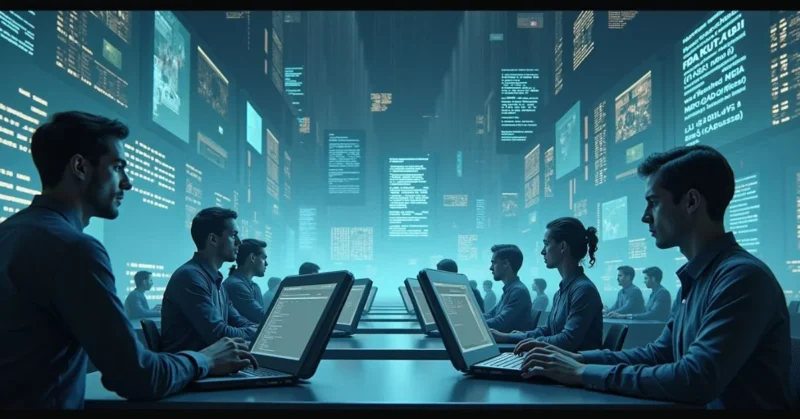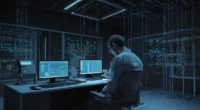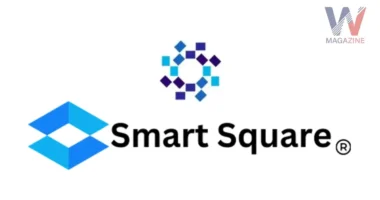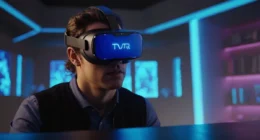Table of Contents
The Dead Internet Theory asks a simple question: Is most of the internet we browse really made by humans or by bots and AI? It claims that since around 2016,2017, genuine human activity has been replaced by automated content, deliberate manipulation, and algorithmic control. Proponents believe big corporations or even governments could be flooding the web with AI-generated posts to influence opinions, hide real voices, and steer visibility toward what they want users to see.
Origins: Where the Idea Comes From?
This theory took root in hidden corners of the internet forums like 4chan, Wizardchan, and Macintosh Cafe before spreading wider in a 2021 post called “Dead Internet Theory: Most Of The Internet Is Fake.” The Atlantic helped make it mainstream, calling it the key text or “urtext” of the theory.
Experts, however, argue that much of this is overblown. Many bots serve useful purposes, like stealing data or updating search engine indexes, as many studies show human-generated content still dominates social media. Still, the rise of generative AI has blurred lines, making detection harder.
Why It Matters? The Role of AI Today
- Algorithmic Escalation: Social networks prioritize engagement, often promoting content that is emotion-driven but low on substance.
- Rapid AI Growth: AI tools like Chat GPT now generate content by the billions of blogs, images, and comments, making it harder for users to spot what’s real.
- Business Incentives: Companies use AI to scale content cheaply. Content farms, or “spam mills,” can flood the internet with repetitive, meaningless posts to boost clicks.
How does It Compare to Earlier Titles?
| Theory | Core Claim | Driver | Human Response |
| Dead Internet Theory | Bots and AI replaced humans on the web | Algorithms, bots, corporate/government agendas | Fear & suspicion |
| Previous bot concerns | Bots disrupting traffic and data | Hacking, scraping, DDoS | Frustration with spam |
| Algorithmic filter bubble | AI narrowing what we see based on profile | Personalized ads & feeds | Awareness & adjustment |
The Dead Internet Theory merges older worries bot spam and filter bubbles with the new fear of generative AI completely overwhelming the online world.
Evidence: What’s Real and What’s Not
- Bots are real. Cybersecurity firms like Imperva estimate bots create ~50% of all web traffic, some helpful, others harmful.
- Generative AI is growing. Automated tools now crank out content at scale, often without disclaimers.
- Human presence persists. Despite automation, human-made content still powers most viral, creative, or meaningful posts.
The Real Consequences
- Trust erosion: Users worry they’re not talking to real people, undermining online authenticity.
- Misinformation risk: AI can create misleading or false content that looks real, influencing public opinions.
- Privacy & ethics: AI uses personal data to curate more targeted content, raising concerns about manipulation and consent.
- Humanity in high demand: Small, trusted communities, private servers, Discord, and Mastodon are emerging as digital safe havens.
What can you do?
- Spot bots: Look out for repeating comments, generic posts, or suspicious profiles with odd activity.
- Support real creators: Engage with smaller, active communities and verified authors.
- Demand change: Encourage platforms to use bot detection, AI labelling, and stronger verification tools.
- Be mindful: Think critically of what you see and share. Question sources, look for inconsistencies, and share responsibly.
How AI and Bots Shape the Internet Today?
In the early days, AI and bots were mainly used for simple tasks like filtering spam or answering basic customer queries. But today, their capabilities have grown far beyond that. Thanks to breakthroughs in machine learning and natural language processing, these technologies can now generate advanced, creative content not just text, but also music, videos, and graphic designs.
On platforms like Facebook, Twitter, Instagram, and TikTok, AI plays a big role in customizing what you see. These algorithms study how you interact with what you like, comment on, or watch, and then serve up content that’s most likely to keep you engaged. While this boosts user activity, it also blurs the line between human and automated interaction.
How does the Dead Internet Theory Affect Society and Culture?
The Dead Internet Theory doesn’t just raise technical questions it also has deep social and cultural implications. One of the biggest concerns is how AI can subtly influence our thoughts and behavior. When most of what we see online is shaped by algorithms, it becomes easier for these systems to steer our opinions, feelings, and even decisions without our awareness.
Social media algorithms often prioritize content that triggers strong emotions, which tends to be controversial or sensational. This can result in a “bubble effect,” where users are repeatedly shown content that reinforces their existing beliefs. Instead of promoting balanced views, these platforms may unintentionally contribute to social division or conflict.
Conclusion
The Dead Internet Theory raises important concerns: bots are everywhere, AI is advancing fast, and human voices can feel drowned out. But the theory’s extreme view that the internet is “dead” is still speculative. It does, however, offer a wake-up call: we must guard against automation overriding authenticity. Humanity hasn’t vanished yet, but we must act now to preserve meaningful connections in a digital age defined by algorithms.









